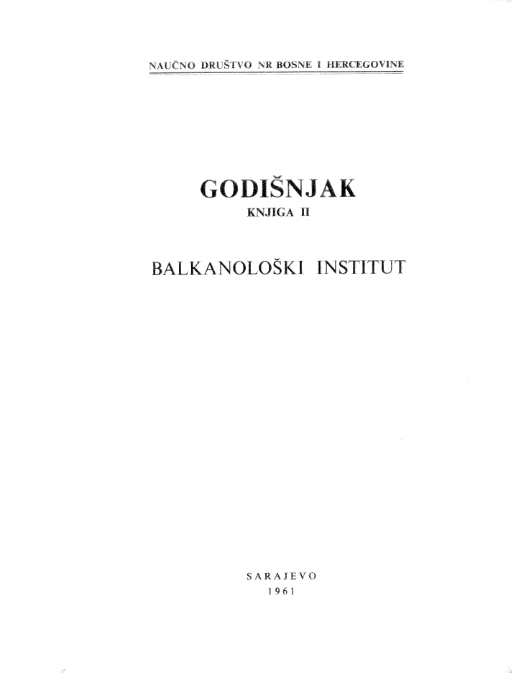Žene kao narodni glavari kod nekih balkanskih naroda
Women as Village and Group Heads in the Balkans
Author(s): Milenko S. FilipovićSubject(s): Customs / Folklore, Social history, Gender history, Social differentiation, Social Norms / Social Control
Published by: Akademija Nauka i Umjetnosti Bosne i Hercegovine
Keywords: Balkans; women; men; social roles; household; social norms;
Summary/Abstract: It is a common fact that in societies having matrilocal residence and matrilineal kinship system the status of women is rather favorable. Nevertheless even in such societies village or group headmanship as well as political and war leadership belong to male members of the community. It occurs, on the other side, that in patrilineal and patrilocal societies women function as village heads or leaders. Women in these functions were to be found among the Balkan peoples too: among the Romanic Vlahs and the Slavic Serbs and Macedonians and probably also among the Albanians. By the end of the 19th and in the beginning of the 20th century there were in Western Macedonia, in the region of Debar, female village heads a quite common feature. The author presents several such cases. These women were real and fully authorized village heads, having and exercizing all and the same rights, prerogatives and duties as their male fellows in other villages. They were also assisted by two aza (assistants) and the council of village elders (starci), all of them being male. Women were elected for this office primarily by reason of scarcity of able and vigorous men, since almost all grown ups and healthy men usually were out of the village in order to earn living abroad. Another reason for this phenomenon played also a considerable part. It was the motif of passive defense from the Albanians, who were a great danger and annoyance to their Christian neighbors in Macedonia: according to the Albanian customary law women were safe and unassailable, and election of women in village headmanship was for Christian peasants a form of self-defense. The author established that women as village heads were to be found also in Serbian regions, e. g. in the districts of Pristina (Kosovo) and Prizren, then in the regions of Južno Pomoravlje (the drainage area of the river of Southern Morava) and Šumadija: according to scarce data several women acted as village heads especially during the Bulgarian occupation in 1915-8.
Journal: Godišnjak Centra za balkanološka ispitivanja
- Issue Year: 1961
- Issue No: 2
- Page Range: 139-157
- Page Count: 19
- Language: Serbian

